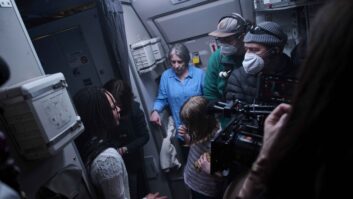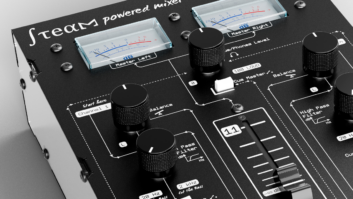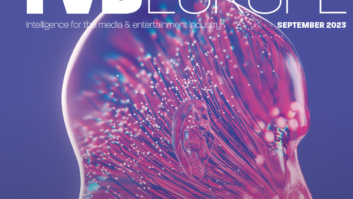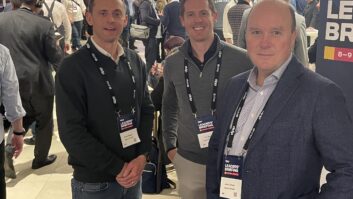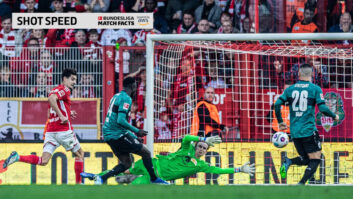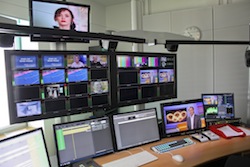
Following around 20 months of construction, Südwestrundfunk’s new broadcasting centre started operations in June this year. A production system has been installed in the new building which has brought the areas of television, radio as well as internet together tri-medially under one roof. Innovation and an openness towards new work and technology processes have made it possible to realise an infrastructure which makes the SWR a technological trailblazer and guide for today’s broadcast industry. A key aspect for the realisation of the trend-setting concept was the development of a file-based architecture based on the latest and most reliable broadcast IT processes. Grouped together under the working title ‘tapeless production’, the broadcast systems integrator Wellen+Nöthen was commissioned with the realisation of this ambitious project. As general contractor, Wellen+Nöthen took over the responsibility for the creation of an infrastructure, which made it possible for around 500 editorial staff, cutters, graphic artists and other production personnel to jointly produce file-based studio, news, sports and magazine contributions in a system covering all editorial groups and locations. This is realised by a central Media Asset Management (MAM), which, as an integral unit, can display, activate and control all production operations. This approach had to be realised in order to ensure an interplay between all production components — ingest, central video server system, studio automation, video and audio editing and graphics processing as well as the connection to the IT network. It was the declared aim of SWR to realise the entire production workflow with just one single format. “We have taken the definition of a fixed production format very seriously”, says Pierre Montagne, project manager, Tapeless Production. “This enables all employees, whether they are in editorial pre-cutting, video and audio editing or in graphics processing, to work with a uniform format and the same files in an integrated workflow. In selecting the format we decided on XDCAM-HD 422 at a resolution of 1080i. This is now being used in all internal production operations. Any feeds which we receive from external sources are centrally and consistently converted to this standard when uploading.” The competition The decision in favour of a comprehensive and clearly defined production format was taken, above all, for reasons of speed and flexibility. “TV channels today compete with new media like the internet. We must, therefore, be able to act and react even faster and more flexibly in the area of topical current affairs”, explains Bertram Bittel, director Technology and Production at SWR. “A broadcaster which states topicality in its news reporting as a corporate objective can today no longer allow itself to lose time prior to production on format selection, conversion or transcoding. The time factor is also the reason why we presented systems integrator Wellen+Nöthen with a further challenging task, in addition to the standardisation of the format.” This task was predetermined as a result of the objective of being able to productively access the material during ingest. In other words, while the files are still accumulating, in parallel a start can be made both with the LoRes pre-cutting in the MAM system and with HiRes editing at a total of 25 Avid editing suites. In theory, therefore, it should be possible to play out the processed material before it is completely ingested. “When we approached various manufacturers in the market with this requirement during the tendering phase about two and half years ago, initially we were largely greeted with deaf ears and quizzical expressions,” recalls Daniel Url, sales director at Wellen+Nöthen. “It required quite a lot of imagination and persuasion before we put together a pool of manufacturers who faced up to the challenge with us.” In the end it was specifically arvato Systems (formerly S4M), AmberFin, Avid, MOG Technologies, Aveco and Harmonic (formerly Omneon and Rhozet) who were to solve the task that had been set through their development departments and the modification of products. “We initially defined an exact specification of the required codec which makes it possible to check in the still growing files as a proxy version in the Media Asset Management System VPMS from arvato Systems, while simultaneously the HiRes version is available by means of interfaces from MOG on the Avid ISIS editing storage,” according to Url. The key frames With the codec specification AFN-100 (H264 in the MXF container) specially developed for the SWR application, this was finally resolved with the result that the general production process was significantly accelerated. Immediately following the start of ingest, the material is transferred as HiRes and LoRes versions to the central storage where the key frames are produced automatically. Simultaneously, the generated proxy file is immediately available in the MAM system. There, while the file continues to grow, the editors can start viewing, browsing and proxy cutting, providing the material with metadata and returning it to the video server system. A particular challenge in this context is the generation of a proxy file, which combines a satisfactory quality and resolution for editorial pre-cutting together with a low data transmission rate. With a resolution of 640 x 360 pixels and a transmission rate of less than 2 Mbps, this target was also achieved. After less than 10 seconds the proxy file can be opened at all workplaces while it is still growing. “The AFN-100 codec specification has the potential to become a new dimension in the area of file-based workflows. Not only have the companies involved already firmly integrated the modified format in their own development lines; other customers and manufacturers too, seem to be quite willing to jump on the AFN-100 bandwagon,” says a delighted Url. Bittel is also convinced that the intensive technical planning prior to the new construction has paid off: “We are really positively surprised at how smoothly our workflow operates. Of course, complete file-based work initially meant a large process of adjustment for colleagues, but everyone has realised just what enormous advantages the new processes create and how they make the work easier. “What particularly pleases us is that now all employees are able to work together, independent from location and on a cross-functional platform using the common surface of the MAM. And I am pleased to note that many colleagues have involved themselves, taking responsibility for the complete system. “This participation is already reflected in everyday operations after about four months of broadcasting. Within the framework of brainstorming sessions, various project groups work regularly to develop new optimisation proposals for our workflows. We thus consistently drive the further development of our technical infrastructure – and on the other hand bring our system integrator to new challenges.”
